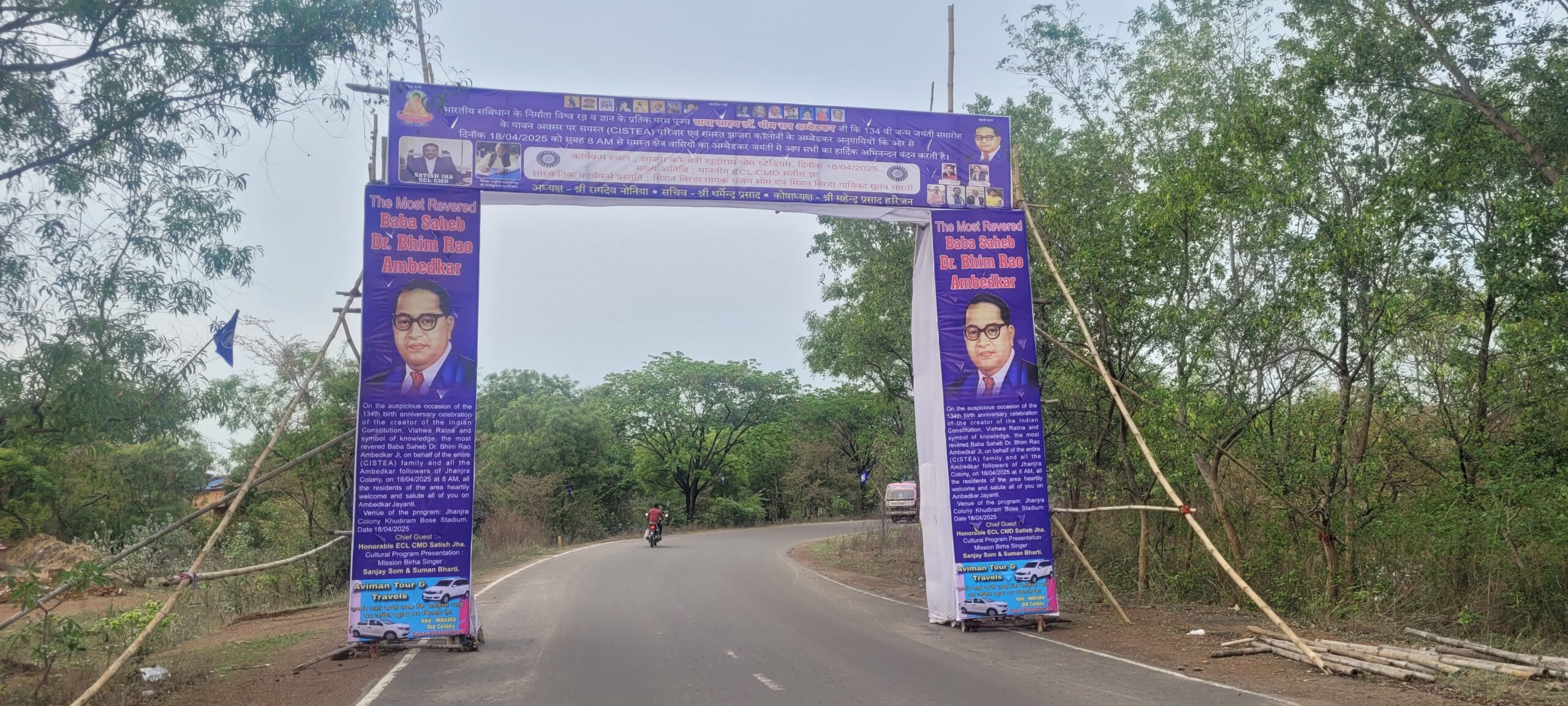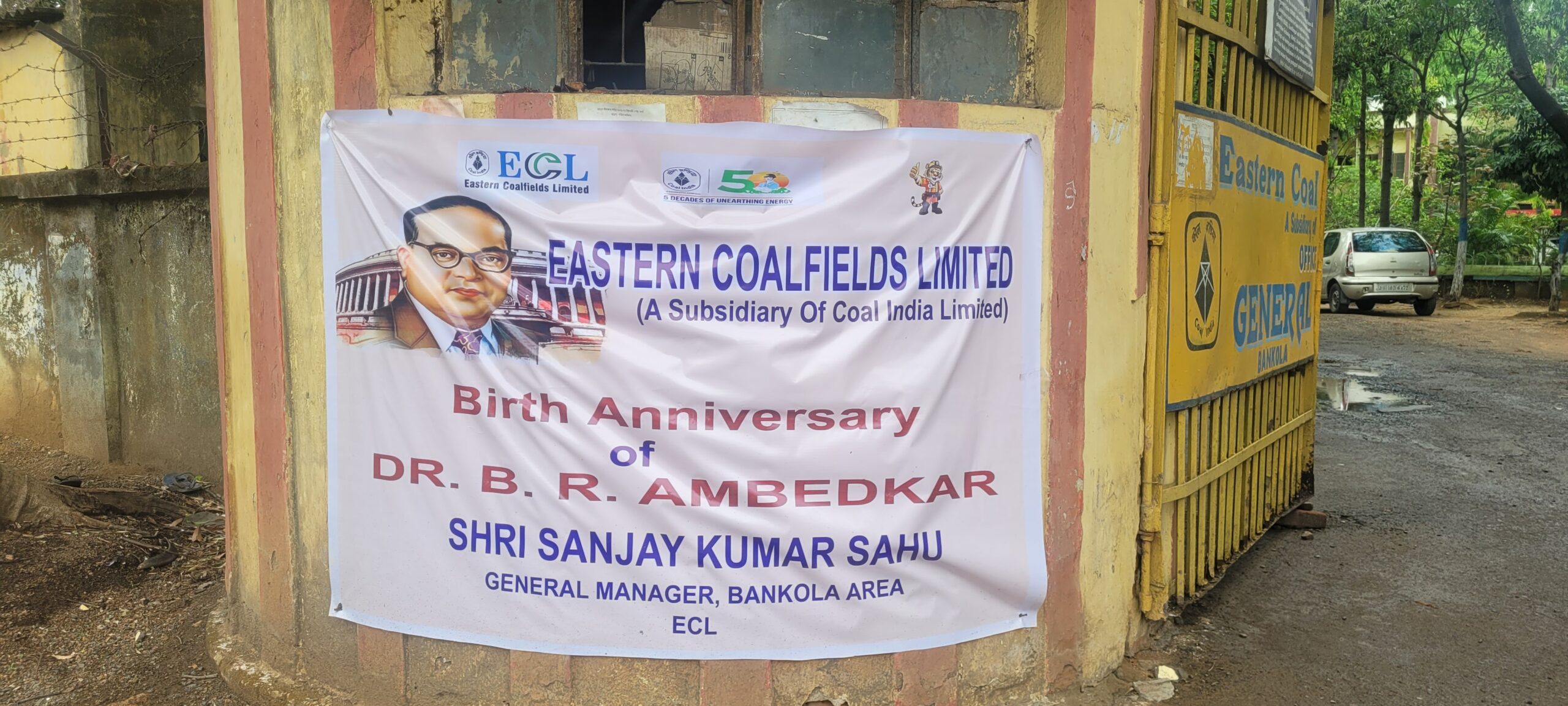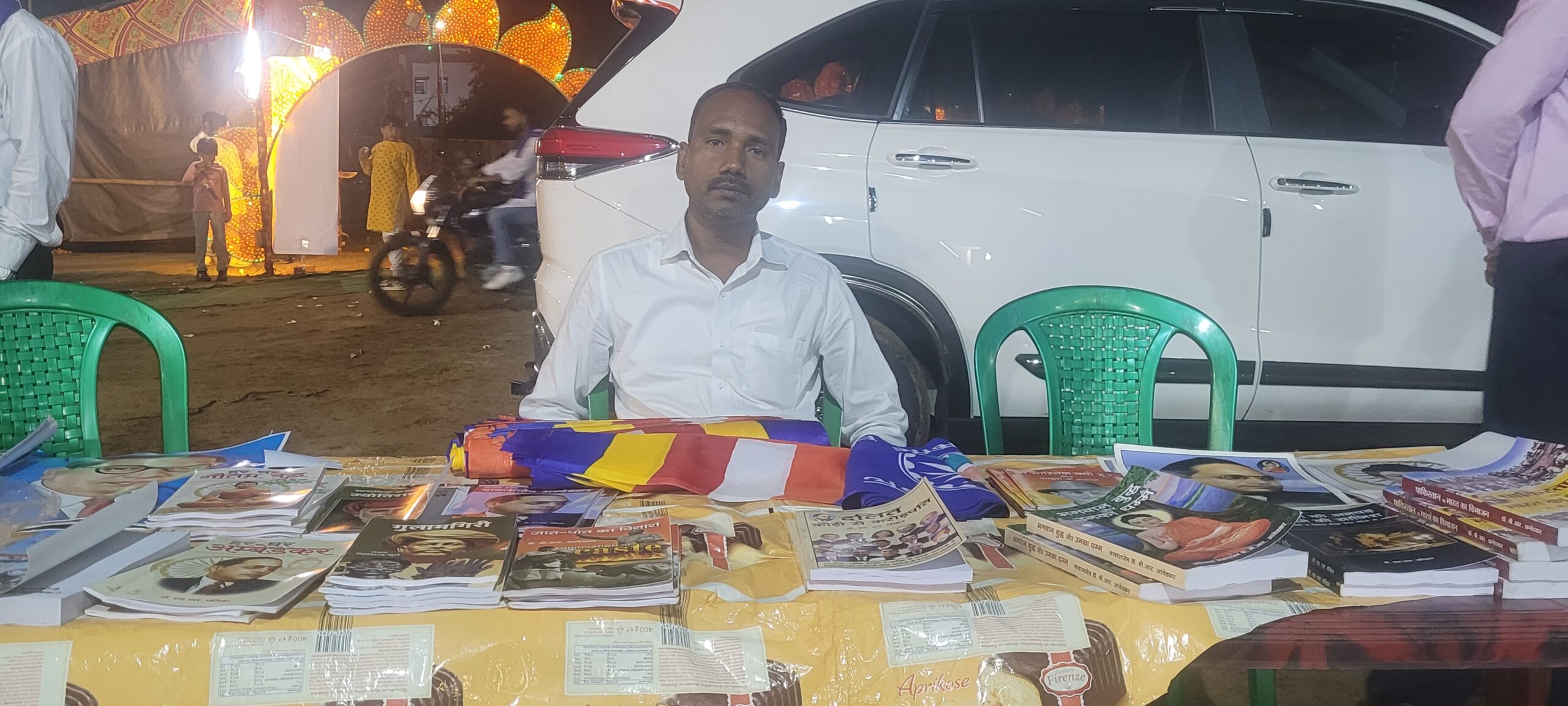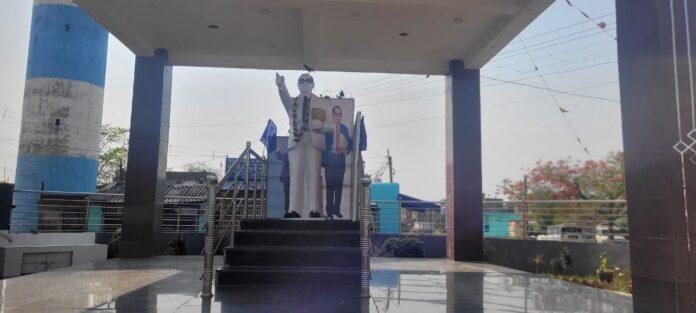Poonam Masih, TwoCircles.net
Asansol (West Bengal): This year, for the first time, Ambedkar Jayanti was officially celebrated across West Bengal’s underground coal-producing regions, particularly in Asansol, India’s coal capital. What once passed quietly is now marked with pride, music and public remembrance.
From April 14 onwards, week-long programmes unfolded across collieries – garlanding ceremonies, community feasts, cultural performances and readings of Ambedkar’s works. In many of these labour colonies, Dr. B.R. Ambedkar’s statues, installed in the last decade, now serve as central points for gathering and reflection. His image, once marginal in Bengal’s public spaces, has become a symbol of resistance and recognition in the industrial belt.
At the Jhanjra Project, one of the country’s largest underground coal mines, the celebration stretched beyond formalities. Bhojpuri songs filled the air, sung not from stages but from within the crowd, echoing Ambedkar’s struggles and the lived experiences of the oppressed. Bookstalls offered texts on Dalit rights and social justice, drawing mine workers and families.
“This kind of gathering was not seen before,” said Puneet Ambedkar, BSP’s Jharkhand state president, who has been working among Dalit communities for over 15 years. He stood behind a modest table offering pamphlets and Ambedkarite literature, engaging with young workers who stopped to ask questions.
“In Bengal,” he explained, “Dalit politics is being shaped by migrant workers from Uttar Pradesh and Bihar. They brought with them not only labour but also lived memories of caste struggle”.

These migrants – many now second or third-generation residents of Bengal’s industrial regions – settled around coal mines, jute mills and steel plants. For decades, they were part of Bengal’s working backbone. But caste, as Puneet noted, was seldom part of public discourse in the state.
“Among Bengalis, discussions of caste have often been replaced by class narratives. Even during the Left era, Dalits had roles in the party, but not in leadership. The structure never truly challenged caste hierarchy,” he said.
That silence is breaking. In places like Khuntadih and Raniganj, Ambedkar Jayanti is no longer limited to symbolic acts. It is part of a larger awakening.
Ramdhari, a foreman at a colliery, has witnessed the change firsthand. His family migrated from Purvanchal decades ago. “We have always celebrated Ambedkar’s birth anniversary. But now it is different. It is now a statement,” he said.

The assertion is no longer confined to communities. Politicians have begun to take notice. “Every party now wants the Hindi-speaking Dalit vote. Even local MLAs attend our events,” said Puneet.
A journalist based in Asansol observed this shift with caution. “West Bengal’s politics traditionally centred on class and gender. But caste, especially in industrial zones, was always there, hidden in plain sight,” he said.
He recalled the legacy of leaders like Ramchandra Dom, a Dalit MP elected from a general seat during the Left regime. “That era was different. But now, with the rise of identity-based politics, caste is re-entering public debate,” he added.
The emergence is not without historical precedent. Bengal’s Dalit communities, such as the Bauris and Matuas, have long fought for dignity and access. But caste remained a sensitive topic, rarely addressed openly.
Recent developments suggest a turning point. In Gidhgram village, East Burdwan, a group of Dalit women had to approach the High Court to win the right to worship in a temple. The court’s verdict, delivered in post-independence India, revealed how entrenched caste exclusion remains.
“It was a legal victory. But it also exposed how far we have to go,” said senior journalist Prabhakarmani Tiwari.

Political parties have adapted quickly. With Ambedkar Jayanti now coinciding with Poila Baisakh, West Bengal’s traditional New Year, leaders from all parties have begun attending these celebrations. “Even the TMC, which once ignored such events, is now present,” he noted.
Across Bengal’s industrial terrain, from the tea estates of Darjeeling to the steel plants of Burnpur, the Dalit presence is not new. What is new is the assertion. Migrant communities, once silent in the margins, are now anchoring a cultural and political revival.
Today, in Asansol’s coalfields, the rhythm of labour is joined by the beat of Ambedkarite songs. Statues that once stood quietly now draw crowds. Ambedkar is no longer a name whispered in classrooms or read in textbooks. He is part of daily life, part of public memory and part of a new pulse moving through Bengal’s industrial heartland.


